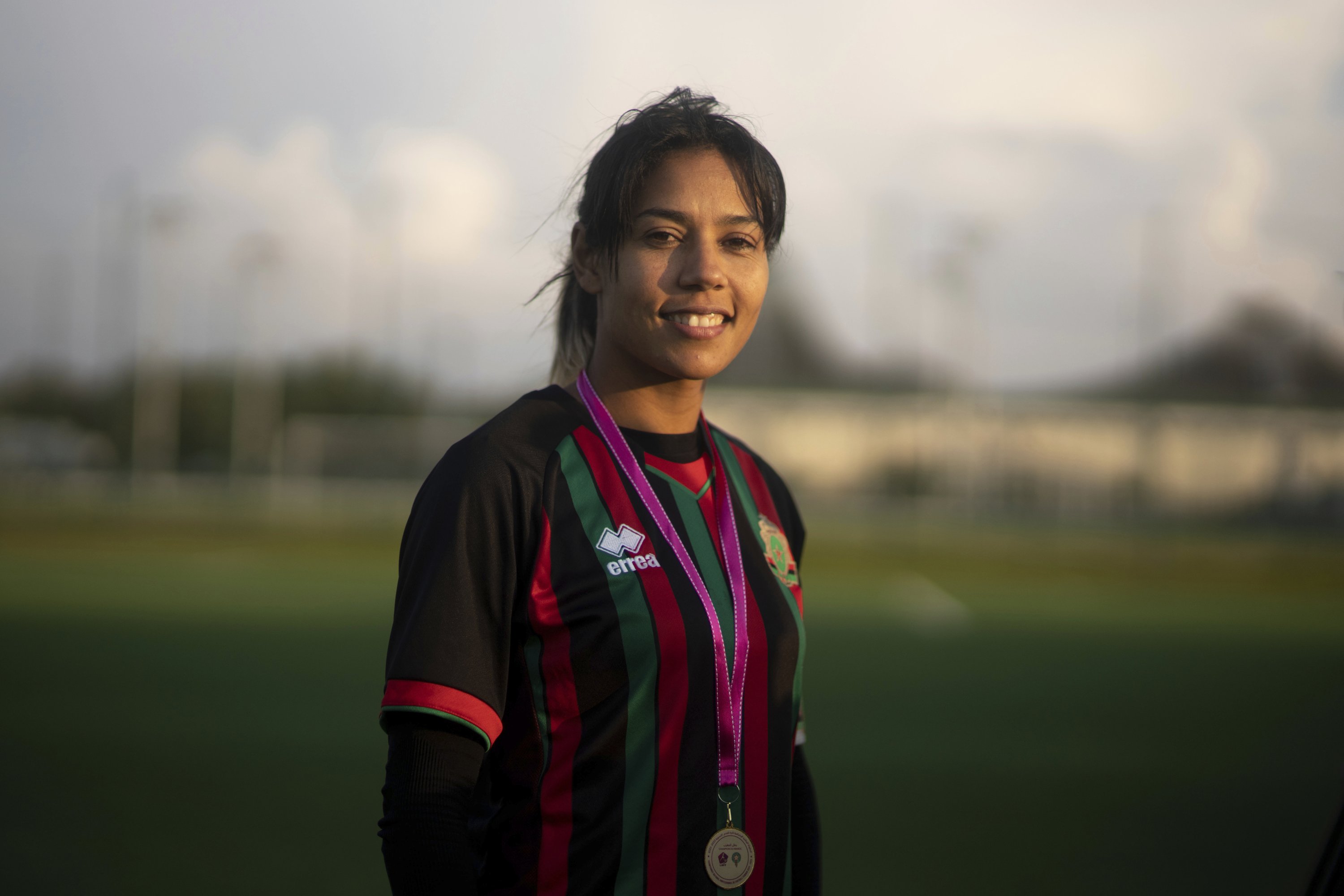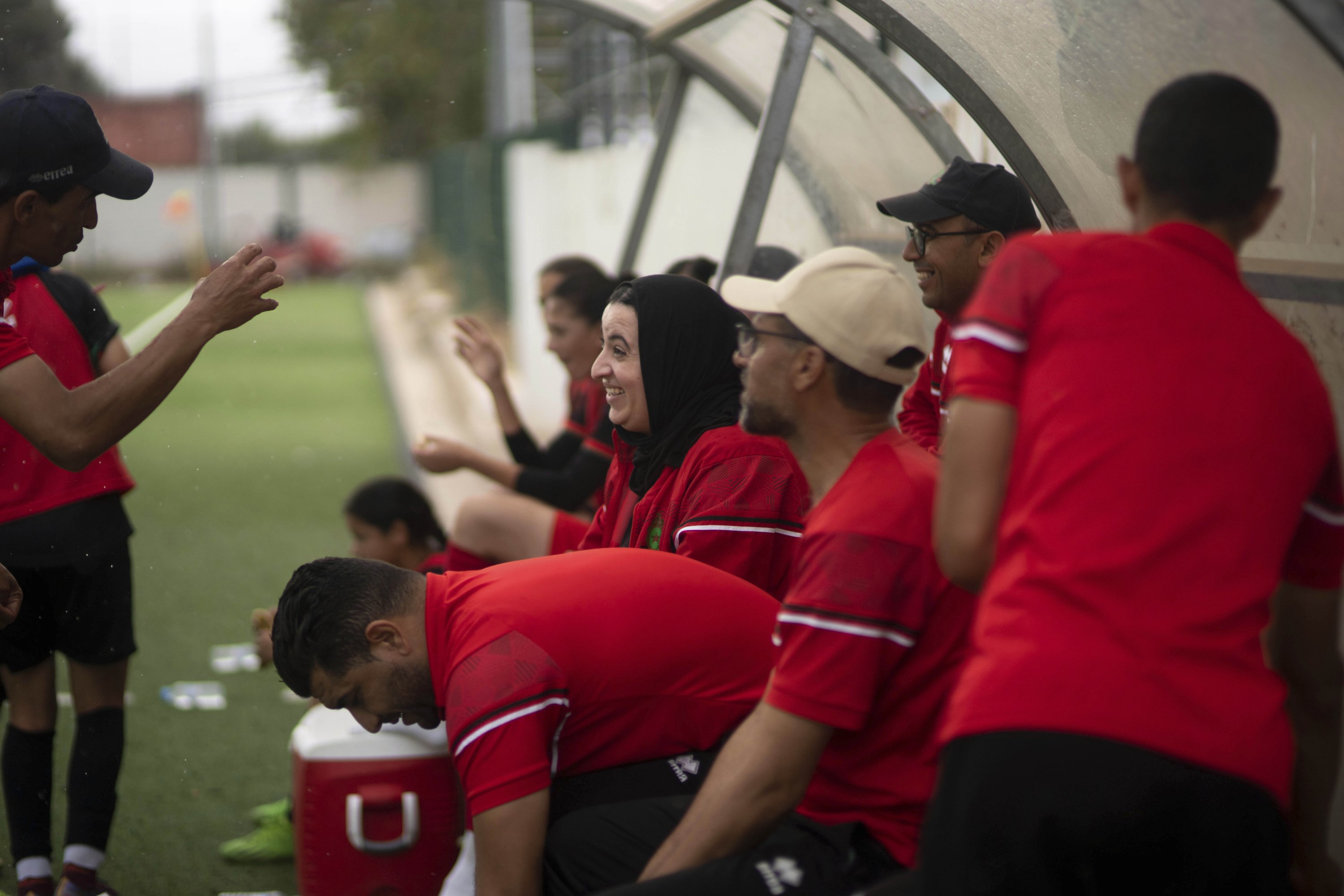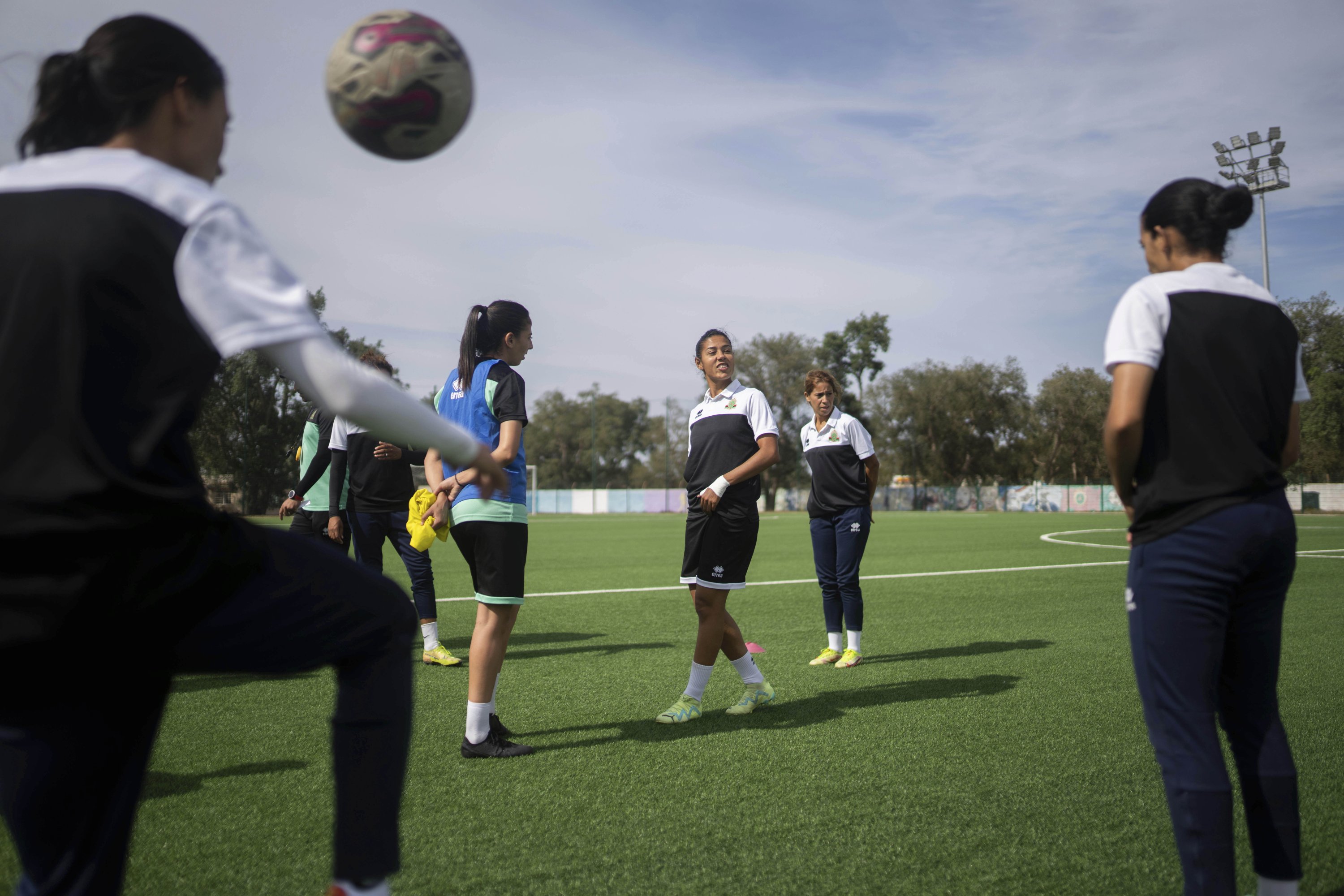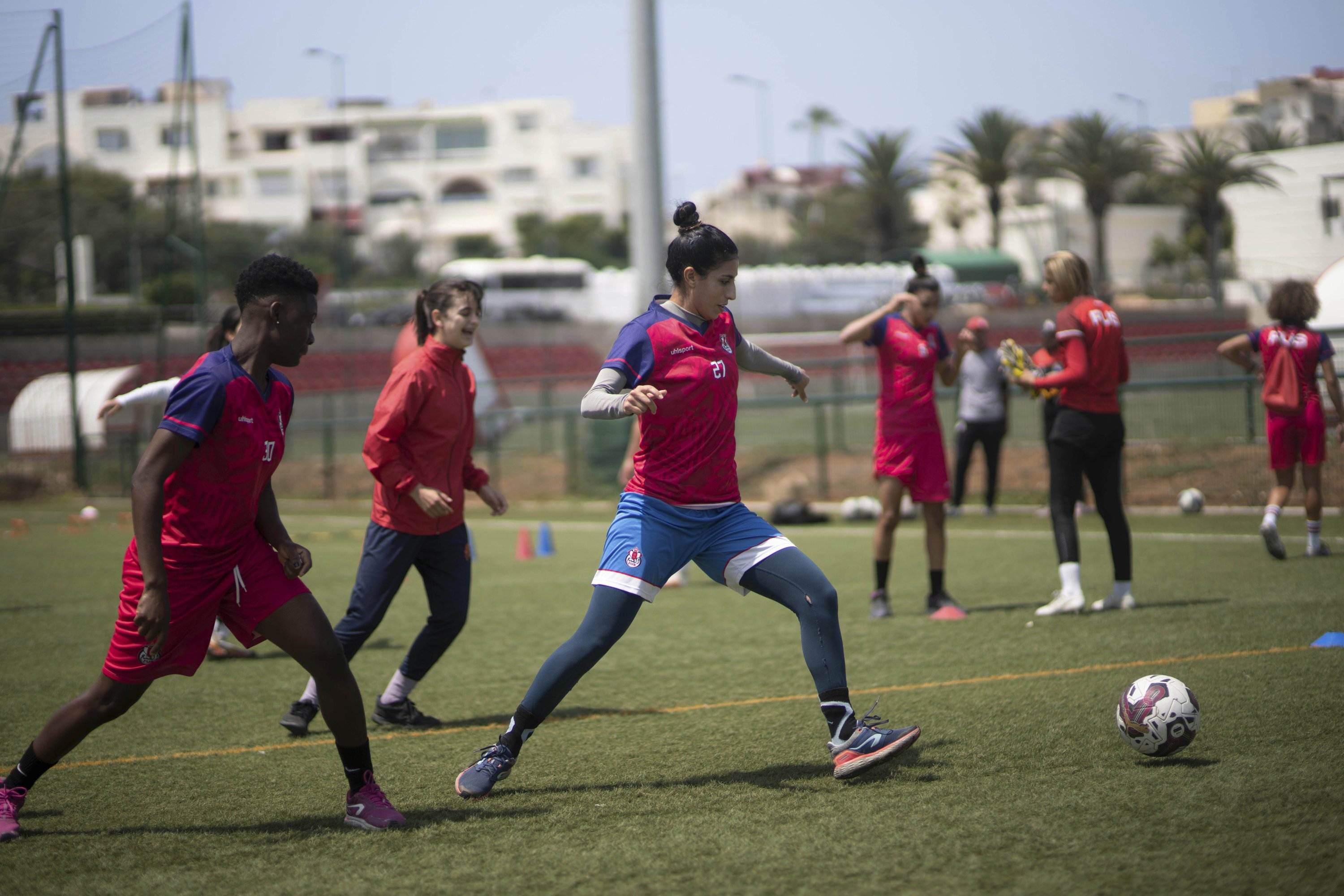© Turkuvaz Haberleşme ve Yayıncılık 2024
In a sparsely attended midweek match, the Association Sportive des Forces Armees Royales (ASFAR), a dominant force in Moroccan women's football, achieved a resounding 7-0 victory over their national women's professional league opponents.
Amid the excitement, one young fan stood out, 5-year-old Aliae Benazzouza, clad in a "Morocco" jersey, eagerly embraced her favorite player, Fatima Tagnaout, capturing a moment that symbolizes the growing allure of Moroccan women's football.
For years, women's football in Morocco has struggled to gain prominence, but recent developments have sparked a shift in perceptions.
The national team dubbed the Atlas Lionesses, is set to make its debut at the FIFA Women's World Cup, becoming the first team from the Arab world to qualify.

This achievement is especially significant in a region where enthusiasm for men's football runs high.
Idriss Benazzouza, Aliae's father, proudly supports his daughters' involvement in sports, emphasizing instilling confidence in them rather than fear. He believes that the Lionesses' success reflects the progress of women's football in Morocco, though he acknowledges conservative views or religious beliefs against women wearing shorts may hinder some people's enthusiasm.
Following in the footsteps of their male counterparts, who reached the World Cup semifinals, the Lionesses' qualification for the global tournament was a pivotal moment.

Morocco's hosting of the Women's Africa Cup of Nations in 2022 attracted large crowds and propelled the country to secure a spot in the Women's World Cup. Football officials and players credit these milestones for rejuvenating women's football in Morocco.
The Royal Moroccan Football Federation has been instrumental in developing football, including women's football, within the country.
This commitment has resulted in implementing sound structures, such as the appointment of coach Reynald Pedros for the Atlas Lionesses and financial support for women's clubs, including salaries. The federation's agreement in 2020 aimed to foster the growth and professionalization of female football with initiatives like establishing a national under-17 championship and increasing female player participation.
Khadija Illa, president of the national women's football league, acknowledges the importance of financial support for success but highlights existing salary gaps between male and female players in Moroccan clubs. While progress has been made, Illa acknowledges they are still in the initial stages of their journey.
Efforts to promote women's football have also been met with changing attitudes. Bahya El Yahmidi, overseeing women's football at ASFAR, recalls the initial resistance faced by girls who wished to play but notes that as victories piled up, attitudes shifted.
Brothers accompanied their sisters, and fathers accompanied their daughters, marking a significant shift in societal perception.

Hiba Karami, a player for Fath Union Sport, celebrates the advancements in women's football that have turned her childhood dream into reality.
Despite facing opposition and criticism, she pursued her passion for the game, showcasing her skills to her male peers and gaining their acceptance.
Karami has witnessed the growing attention toward women's football, particularly during the Women's Africa Cup of Nations, yet she wishes her sister, who passed away, could have witnessed her achievements.
Ghizlane Chebbak, a player for ASFAR and the national team, recognizes the increasing star power and impact female players have on young fans.
The acknowledgment that women have the right to play football fuels her determination to succeed and serve as a role model.

Nouhaila Benzina, another national team and ASFAR player expresses gratitude for the opportunities her football career has provided, breaking new ground and serving as a source of inspiration.
She remains unaffected by those who question her choice to play football while adhering to her modest attire, including the Islamic headscarf.
